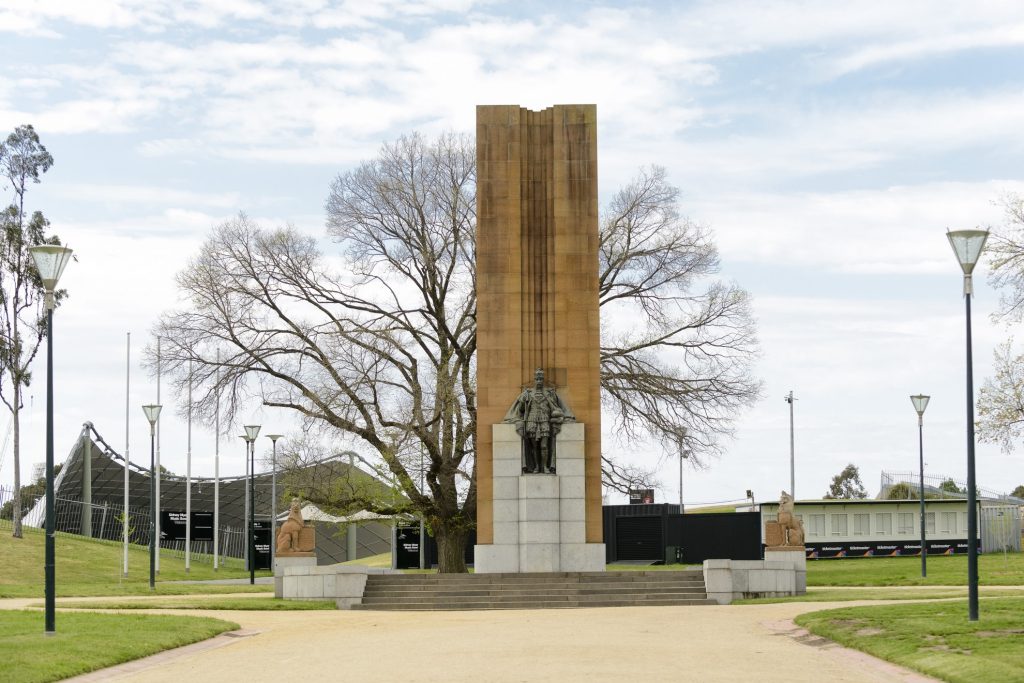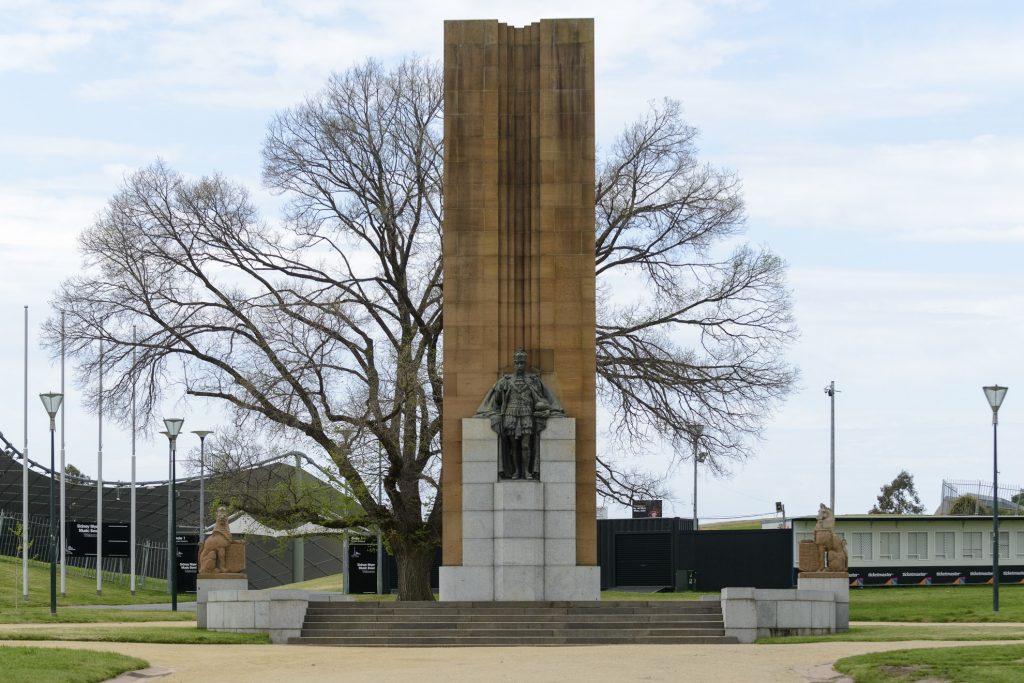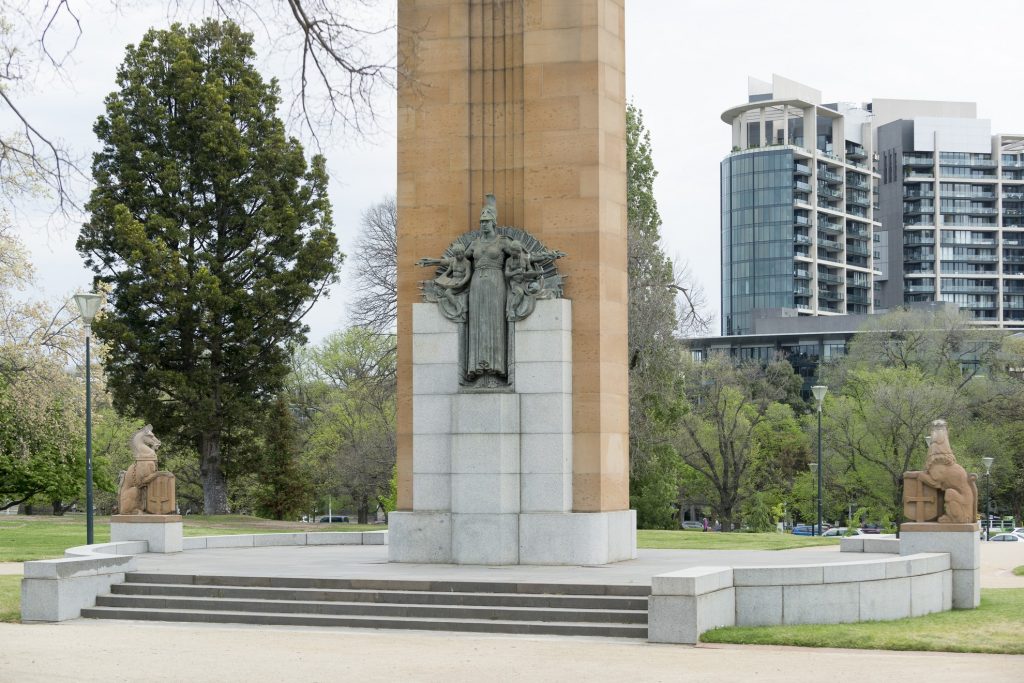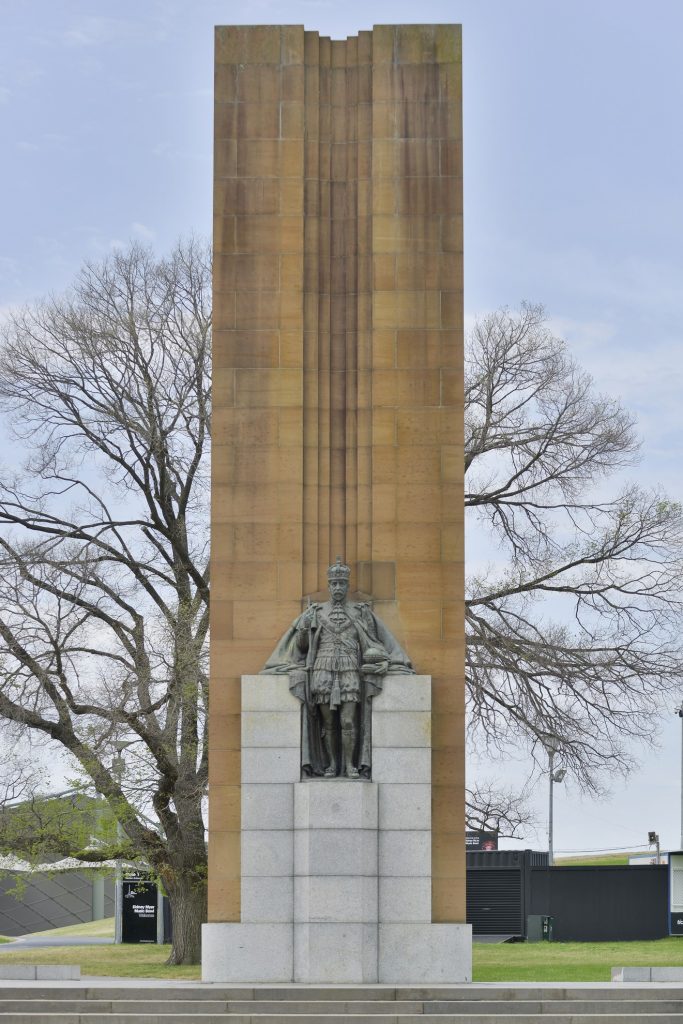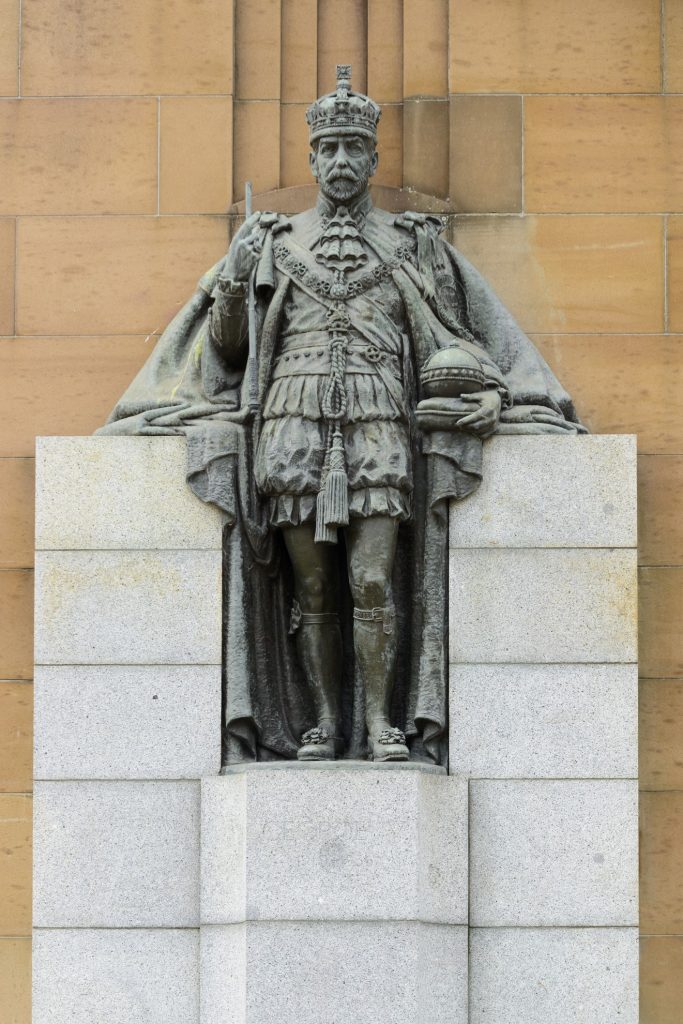King George V,1952, William Leslie Bowles, John Galizia, G.B. Edwards & Sons, bronze, sandstone, granite, bluestone, Kings Domain
Summary
Location: Kings Domain, near Sidney Myer Music Bowl
Sandstone and granite fluted columns are flanked by two large bronze statues with two small heraldic sandstone statues standing north and south on a low set elliptical wall surrounding the central megalithic column. On the eastern face stands a statue of King George V in full Garter Robes, wearing the Imperial Crown and holding the ceremonial sceptre and orb. On the western face stands a statue representing Maternal Britannia holding a cross and olive branch in her hands, symbolic of love and peace, with two children representing the Dominions and Colonies living in peace under British rule are at her feet. Heraldic statures of a lion and a unicorn flank the northern and southern extremities of the base. Each animal holds a shield showing the armorial bearings of King George V. The column structure is surrounded with bluestone paving slabs with a set of seven step stairs on the west and east side leading down into the parklands.
Bowles’ memorial to George V is highly symbolic in design, signalling the power of the monarchy and the British Empire’s paternalism towards its colonies. George came to the throne in 1910 and was more a representative of the people than a political sleuth, as had been Elizabeth I and Edward VII. The Empire underwent several changes during his rule: an independent Irish parliament was established in 1918, the country then divided along religious lines two years later, and demands for self-governance in the colonies resulted in the creation of the British Commonwealth of Nations in 1931.
King George V died in 1936. The outbreak of World War II delayed the construction of Bowles’ memorial to him, which was funded by public subscription and by council. The monument was unveiled in 1952 and underwent conservation in 1996.
